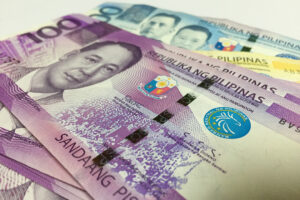By Luisa Maria Jacinta C. Jocson, Senior Reporter
THE VALUE of transactions conducted via InstaPay and PESONet jumped by 39.5% year on year in the first half of the year, the latest data from the Bangko Sentral ng Pilipinas (BSP) showed.
Transactions coursed through the automated clearing houses surged to P11.1 trillion in the January-June period from P7.98 trillion a year prior.
PESONet is mainly used for high-value transactions and may be considered as an electronic alternative to paper-based checks.
Meanwhile, InstaPay is a real-time, low-value electronic fund transfer facility for transactions up to P50,000 and is mostly used for remittances and e-commerce.
Central bank data showed the volume of transactions made via InstaPay and PESONet more than doubled (138.7%) to 1.58 billion at end-June from 660.7 million in the same period a year ago.
The value of transactions done through PESONet climbed by 31.1% to P6.15 trillion in the six-month period from P4.69 trillion the year earlier.
The volume of transactions that went through the payment gateway likewise increased by 16.8% year on year to 56.28 million from 48.18 million.
Meanwhile, the total value of InstaPay transactions stood at P4.98 trillion during the six-month period, surging by 51.5% from P3.29 trillion in the previous year.
The volume of transactions done through InstaPay soared by 148.3% to 1.52 billion in the first six months from 612.52 million a year ago.
InstaPay and PESONet are automated clearing houses that were launched in December 2015 under the central bank’s National Retail Payment System framework.
“The continued double-digit growth in transaction value may still largely reflect the continued growth in online commerce, which accelerated since the pandemic,” Rizal Commercial Banking Corp. Chief Economist Michael L. Ricafort said in a Viber message.
“This also reflects the increased use by more Filipinos of e-wallets in both physical and digital stores, as these are also accessible with larger amounts in bank accounts.”
The latest data from the BSP showed the share of online payments in monthly retail transactions stood at 57.4% in terms of volume, up from 52.8% in 2023. In terms of value, the share of online payments in monthly retail transactions rose to 59% in 2024 from 55.3% in 2023.
“The surge is driven by greater adoption of digital payments across both consumers and businesses,” John Paolo R. Rivera, a senior research fellow at the Philippine Institute for Development Studies, said in a Viber message.
He also cited “broader mobile and internet penetration, and growing trust in the convenience and security of real-time fund transfers.”
The BSP wants online payments to make up 60-70% of the country’s total retail transaction volume by 2028. The share of Filipinos with bank accounts reached 65% of the adult population in 2022.
“Government digitalization efforts and private sector innovations, such as QR payments and app-based banking, have also helped normalize digital financial behavior,” Mr. Rivera said.
“This trend reflects a more financially connected economy and supports the BSP’s push for greater financial inclusion.”
The World Bank’s The Global Findex Database 2025 report released on Wednesday showed that only 50.2% of approximately 82 million Filipinos aged 15 years old and above had financial accounts in 2024, lower than the 51.4% recorded in 2021.
This was also well below the 83.3% average account ownership rate for East Asia and Pacific and the 70.4% for lower middle-income countries.






